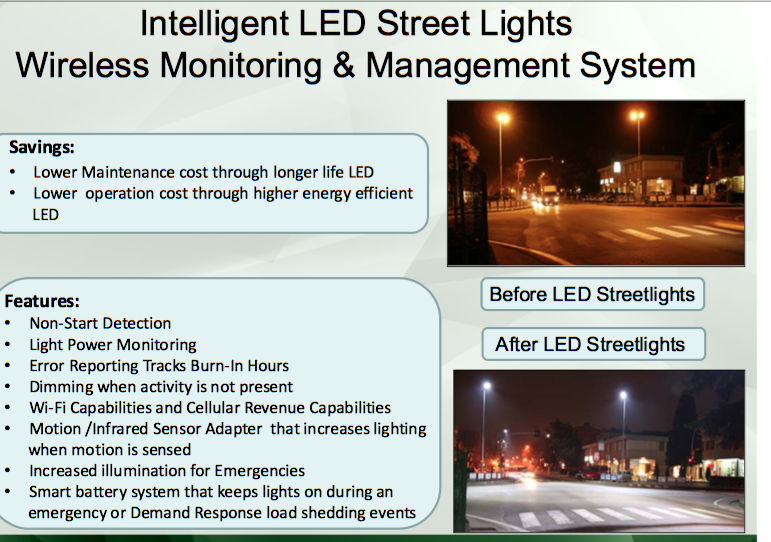Tag: science
Scientists Challenge SCENIHR
 We are in an era of unprecedented psychological manipulation of the science on potential health effects of EMF and RFR.
We are in an era of unprecedented psychological manipulation of the science on potential health effects of EMF and RFR.
Over the last few years, the BioInitiative Working Group has worked many hours on the European Commission’s science reviews of EMF and RFR. What they say matters. It’s the expert committee for the European Union (EU) recommending whether EMF and RFR public safety limits are okay, or need substantial revision. You know where we stand on this. The limits are grossly inadequate in Europe and the US.
The European Scientific Committee on Emerging and Newly Identified Health Risks (SCENIHR) did a bad job of it in 2009, and has unsurprisingly disappointed us again in 2015. Through deceptive language tactics, the Committee has deliberately put out misinformation to erase what should have been clear findings of potential health effects of electromagnetic fields. Health effects that matter greatly to millions of regular people who want to know about EMF.
What’s their NAME?
The Scientific Committee for Emerging and Newly Identified Health Risks, right? Emerging (not proven). Newly identified (not conclusively demonstrated).
What is the NAME OF THEIR REPORT?
“Final opinion on Potential health effects of exposure to electromagnetic fields (EMF)” Not conclusively proven health effects.
What did they conclude?
That there are no conclusively proven biological effects.
How Could That Happen?
” While the scope of the Opinion [SCENIHR, 2015a] did include potential health effects, it was not SCENIHR’s objective to decide whether the possibility of an effect exists, as erroneously suggested by Sage et al. It should be noted that the term “risk” already accounts for probability of a harmful effect and that various levels”. (SCENIHR Leitgeb, 2015)
WHAT?
It would be just an academic farce if our lives didn’t depend on the outcome. But, we do. All around the planet, we depend on good advice from educated experts that are supposed to be independent thinkers and good analysts of what is a ‘potential health effect’. No amount of dust-kicking can obscure the basic fact that the SCENIHR failed to do what it was directed to do.
Read for yourselves. This is double-speak. The SCENIHR’S science review that has failed to carry out the central question asked of this Committee. This is an assessment on which the fate of billions of human beings depends, and upon which global health rests.
For SCENIHR to issue an unwarranted finding of ‘all clear’ by redefining the reporting terms and misreporting the evidence is bad for science, bad for the public and intensely bad for school children who are sitting in classrooms with WiFi all day, required to use wireless tablets for schoolwork. Read more: http://www.bioinitiative.org/rebuttal-emf-effects/
Cindy Sage
New Italian Study links EMFs to cancer
 Italians Seek “Reevaluation” of EMF Safety
Italians Seek “Reevaluation” of EMF Safety
From Dr. Louis Slesin: Once again, power-frequency magnetic fields have been found to act as a cancer promoter.
Eighteen months ago an international team led by Elisabeth Cardis in Spain showed cancer promotion in workers exposed to chemicals and extremely low frequency (ELF) EMFs. Now an Italian team has found essentially the same promotional effect in animals exposed to ionizing radiation and ELF EMFs.
Rats, which received a single low-dose of gamma radiation early in life and were exposed to magnetic fields for their entire lifetime, developed higher than expected rates of three different types of cancer: Breast cancer and leukemia/lymphoma, as well as an extremely rare and obscure tumor, called malignant schwannoma of the heart.
The new study, which was carried out at the Ramazzini Institute in Bologna, Italy, is part of the most ambitious EMF animal project ever attempted.
Read the complete report here http://microwavenews.com/news-center/ramazzini-animal-study
The perils of LED streetlights

There is a major push all over the country to install LED streetlights based on assumptions of saving energy and money. In places where the LEDs have been installed there are so many complaints. On February 16 Sebastopol will consider whether or not to allow PG&E to install the LED streetlights. PG&E owns the streetlights and requires cities to opt-in to the changeout.
PG&E is currently installing LED streetlights in Santa Rosa, and we took a team to investigate, measure and photograph there. What we found is, unlike the warm yellow streetlights, the LED’s are very white, with cold blue tones, and painfully bright.
Mary Carvalho who lives in Santa Rosa writes, “Has anyone noticed lately that the night sky is lit up like a full moon every night?”
Paul Marantz, a lighting designer said about the yellow streetlights, “there was a warmth about them that’s missing from the new lights. And because of the way the LEDs are designed, it’s a much more directed light, with more glare.”
When the environment is saturated with blue rich light it causes melatonin reduction which can affect sleep. Harvard Medical School reported blue light has a dark side. “Light at night is bad for your health, and exposure to blue light emitted by electronics and energy-efficient lightbulbs may be especially so.”

Bob Parks, executive director of the International Dark-Sky Association states, “Now, people can certainly close their blinds and block-out that rich blue-white light. The problem is that every other species on the planet can’t do that, so you have an impact on everything else. And not just animals — we are talking plants, trees, right down to one-cell organisms.”- Earth Island Journal
The Department of Energy (DOE) and IEEE reported there are serious health risks from LEDs if inexpensive drivers are used. DOE writes, “Why is flicker bad? For one thing, in addition to being annoying and distracting, it can cause eyestrain, blurred vision, and impairment of performance on sight-related tasks. And in those who are flicker-sensitive, it can cause debilitating headaches and migraines — 10% of the population is estimated to suffer from migraines, and that’s only one of the groups prone to flicker sensitivity. According to the IEEE recommended practice, flicker has been reported to contribute to autistic behaviors, and can be a trigger for epileptic seizures.… Some of these problems might occur even when the flicker isn’t detectable by the eye.”
The EMF Safety Network sent a list of questions to PG&E about their LED streetlights. We await their answers. We can trust PG&E will cut costs and we can’t be certain they will tell the public the truth. We don’t know whether or not PG&E will be using the streetlights for wireless transmissions, as has been done in Los Angeles and Florida. The California Public Utilities Commission (CPUC) had a presentation on their website that touted the benefits of “intelligent” wireless streetlights.
We don’t know if PG&E is installing these, but we do know the rapid increase of microwave technologies deployed on our homes and in our neighborhoods, largely without informed consent, threatens privacy, public health, children, wildlife and nature.
The other risk is whether or not the LED streetlights add unintentional radiation to the power lines, creating “dirty electricity” like PG&E smart meters do. Samuel Milham, MD and David Stetzer, Electrical Engineer wrote a peer reviewed published paper in 2013. They wrote, “Dirty electricity, also called electrical pollution, is high-frequency voltage transients riding along the 50 or 60 Hz electricity provided by the electric utilities… has been associated with cancer, diabetes and attention deficit hyperactivity disorder in humans.
Some people claim brighter streetlights will help reduce crime. However, Earth Island Journal reported “Public safety was a big motivator behind the Oakland conversion project, and it may seem intuitive that brighter lights improve safety. However, some studies suggest that though brighter streets make people feel safer, they have no impact on actual crime levels.”
In 2015, PG&E’s claims of LED cost and energy savings were merely assumptions. In the CPUC 2015 Uncertain List they stated, “market move to LED technology requires verification.” As yet PG&E has offered no proof. In addition the city claimed the streetlight conversion would be free, however PG&E intends to recover streetlight costs through customers rate increases. So we all pay for the LED streetlights.
Why should perfectly good streetlights be scrapped for a risky technology whose benefits are questionable? A study published in late 2010 in the journal Environmental Science and Technology found that LEDs contain lead, arsenic and a dozen other potentially dangerous substances. While it is possible that the LED’s save energy, it’s not worth the cost to public and environmental health.
In September 2015, the Sebastopol city council had the PG&E streetlight conversion on their consent calendar. Due to complaints, they took the issue off consent and put it on the regular agenda. At that meeting, Rich Emig, Public Works superintendent, gave a report acknowledging the LED health risks. Public comments included one woman who said when she was a child she had seizures from light flicker. See the Sebastopol City Council’s video which starts at 1:40:00
Considering the city acknowledged the serious pubic health risks, why are they bringing it back to the council, and why have they not notified the public of this issue that will affect each and everyone of us?
More information:
What LED light pollution looks like from space
http://www.techinsider.io/astonauts-photos-from-space-leds-light-pollution-2016-1
Ecological Light Pollution http://www.urbanwildlands.org/Resources/LongcoreRich2004.pdf
A Silent Cry for Dark Skies http://astrosociety.org/edu/publications/tnl/74/74.html#3
Residents sue Monterrey over new LED streetlights (2012)
http://www.montereyherald.com/article/ZZ/20120717/news/120718012
Ann Arbor Michigan has been a leader in converting city streetlights to energy-efficient LEDs, but despite a large reduction in energy usage, DTE Energy is proposing rate increases for LED lights, while decreasing rates for conventional high-pressure sodium lights. http://www.mlive.com/news/ann-arbor/index.ssf/2015/02/ann_arbor_responds_to_streetli.html
Darkness is a requisite part of life.
“Half of your life, half of the lives of all nature, half of all human history has occurred between sunset and sunrise. We and all of the natural kingdom have evolved in a landscape that segues from a bright blessed day to a dark sacred night. A dark night is really that–sacred. Every cell in the human body has time-related functions, part of the bigger circadian system. I’m referring to science, not some woo-woo feel-good incense-laden chanting mysticism. Healthy life depends on critical functions for which the absence of light is essential.”
1. All outdoor lighting shall be full cutoff, or fully shielded.
2. If LED lights are used, they shall have a correlated color temperature (CCT) less than 3000K.
3. All lights shall minimize glare, sky glow, and light trespass. —–Excerpt and recommendations from www.Nightwise.org
Video of New York news story on LED street lighting and resident reaction. http://pix11.com/2015/04/27/new-bright-leds-that-replaced-street-lamps-angering-local-residents/
The city of Davis received so many complaints about the LED lights they put the project on hold for a year, then spent $350,000 more money on the project. http://sacramento.cbslocal.com/2014/10/21/davis-will-spend-350000-to-replace-led-lights-after-neighbor-complaints/
Berkeley complaints: http://www.berkeleyside.com/2014/08/06/berkeley-residents-weigh-in-on-new-led-streetlights/
Houston, we’ve got a problem with LEDS. http://www.houstonpublicmedia.org/articles/news/2016/02/08/136878/city-waiting-for-more-information-on-alternative-led-street-lights-as-some-call-for-change/
Dr. Martin Pall: EMF’s are the major cause of autism
Dr. Martin Pall states EMF’s are the major cause of autism. In addition, chemicals and EMF’s combined produce autism. In this lecture he presents the scientific evidence. Dr. Pall is a professor emeritus of biochemistry and basic medical sciences at Washington State University.
Captured agency: An expose of the FCC
 Investigative journalist Norm Alster exposes the Federal Communications Commission (FCC) in a new 59 page paper published by Harvard University. “Captured agency: How the Federal Communications Commission is dominated by the industries it presumably regulates.” http://bit.ly/FCCcaptured
Investigative journalist Norm Alster exposes the Federal Communications Commission (FCC) in a new 59 page paper published by Harvard University. “Captured agency: How the Federal Communications Commission is dominated by the industries it presumably regulates.” http://bit.ly/FCCcaptured
Alster calls on the FCC to acknowledge there may be wireless health risks, to back off wi-fi promotion, to acknowledge children and pregnant women may be more vulnerable and more. Excerpts:
Perhaps the best example of how the FCC is tangled in a chain of corruption is the cell tower and antenna infrastructure that lies at the heart of the phenomenally successful wireless industry.
Personally, I don‘t believe that just because something can be done it should heedlessly be allowed. Murder, rape and Ponzi schemes are all doable but subject to prohibition and regulation. Government regulators have the responsibility to examine the consequences of new technologies and act to at least contain some of the worst. Beyond legislators and regulators, public outrage and the courts can also play a role but these can be muffled indefinitely by misinformation and bullying. Norm Alster
Study links cell phones to addiction
 College students spend an average of 8 hours or more a day on their cellphones and women spend the most time, up to ten hours a day. Excessive use poses potential risks for academic performance, according to a Baylor University study on cellphone activity published in the Journal of Behavioral Addictions.
College students spend an average of 8 hours or more a day on their cellphones and women spend the most time, up to ten hours a day. Excessive use poses potential risks for academic performance, according to a Baylor University study on cellphone activity published in the Journal of Behavioral Addictions.
The study notes that approximately 60 percent of college students admit they may be addicted to their cell phone, and some indicated they get agitated when it is not in sight, said Roberts, lead author of the article “The Invisible Addiction: Cellphone Activities and Addiction among Male and Female College Students.”
“That’s astounding,” said researcher James Roberts, Ph.D., Professor of Marketing in Baylor’s School of Business. “As cellphone functions increase, addictions to this seemingly indispensable piece of technology become an increasingly realistic possibility.”
General findings of the study showed that:
• Of the top activities, respondents overall reported spending the most time texting (an average of 94.6 minutes a day), followed by sending emails (48.5 minutes), checking Facebook (38.6 minutes), surfing the Internet (34.4 minutes) and listening to their iPods. (26.9 minutes).
• Men send about the same number of emails but spend less time on each. “That may suggest that they’re sending shorter, more utilitarian messages than their female counterparts,” Roberts said.
• Women spend more time on their cellphones. While that finding runs somewhat contrary to the traditional view that men are more invested in technology, “women may be more inclined to use cellphones for social reasons such as texting or emails to build relationships and have deeper conversations.”
• The men in the study, while more occupied with using their cellphones for utilitarian or entertainment purposes, “are not immune to the allure of social media,” Roberts said. They spent time visiting such social networking sites as Facebook, Instagram and Twitter. Among reasons they used Twitter were to follow sports figures, catch up on the news — “or, as one male student explained it, ‘waste time,’” Roberts said.
Excessive use of cellphones poses a number of possible risks for students, he said.
“Cellphones may wind up being an escape mechanism from their classrooms. For some, cellphones in class may provide a way to cheat,” Roberts said.
Excessive or obsessive cellphone use also can cause conflict inside and outside the classroom: with professors, employers and families. And “some people use a cellphone to dodge an awkward situation. They may pretend to take a call, send a text or check their phones,” Roberts said.
Roberts noted that the current survey is more extensive than previous research in measuring the number and types of cellphone activities. It also is the first to investigate which activities are associated significantly with cellphone addictions and which are not.
Study participants were asked to respond to 11 statements such as “I get agitated when my cellphone is not in sight” and “I find that I am spending more and more time on my cellphone” to measure the intensity of their addiction.
The study noted that modern cellphone use is a paradox in that it can be “both freeing and enslaving at the same time.”
“We need to identify the activities that push cellphone use from being a helpful tool to one that undermines our well-being and that of others,” Roberts said.
Baylor University did a previous where they reported “Cell phone and instant messaging addictions are driven by materialism and impulsiveness and can be compared to consumption pathologies like compulsive buying and credit card misuse, according to a Baylor University study in the Journal of Behavioral Addictions.”
“Cell phones are a part of our consumer culture,” said study author James Roberts, Ph.D., professor of marketing and the Ben H. Williams Professor of Marketing at Baylor’s Hankamer School of Business. “They are not just a consumer tool, but are used as a status symbol. They’re also eroding our personal relationships.”
Cell phones linked to anxiety, lower grades, and unhappiness
 Almost everywhere you look someone has a cell phone pressed to their ear, or has one in their hand. Students depend on the devices to connect with friends and family.
Almost everywhere you look someone has a cell phone pressed to their ear, or has one in their hand. Students depend on the devices to connect with friends and family.
A recent study led by Kent State University researchers, surveyed more than 500 undergraduate students from 82 different majors. They recorded daily cell phone use along with anxiety and happiness levels. In addition student grades were included in the study.
Results were students who used their cell phones more had lower grades, higher anxiety, and less happiness relative to their peers who used the cell phone less.
Earlier this year, Kent researchers linked cell phone use to poor student fitness. These results suggest that people should be encouraged to reduce their cell phone use! Or, better yet, use them for emergencies only!
Safety tips for cell and cordless phone use: Learn more
Dr. Mercola’s comments on this study include raising awareness about second hand radiation effects.
Dr. Mercola writes: “Respect Others Who Are More Sensitive: Some people who have become sensitive can feel the effects of others’ cell phones, iPads, and other gadgets in the same room, even when it is on but not being used. If you are in a meeting, on public transportation, in a courtroom or other public places, such as a doctor’s office, keep your cell phone turned off out of consideration for the “secondhand radiation” effects. Children are also more vulnerable, so please avoid using your cell phone near children.”
